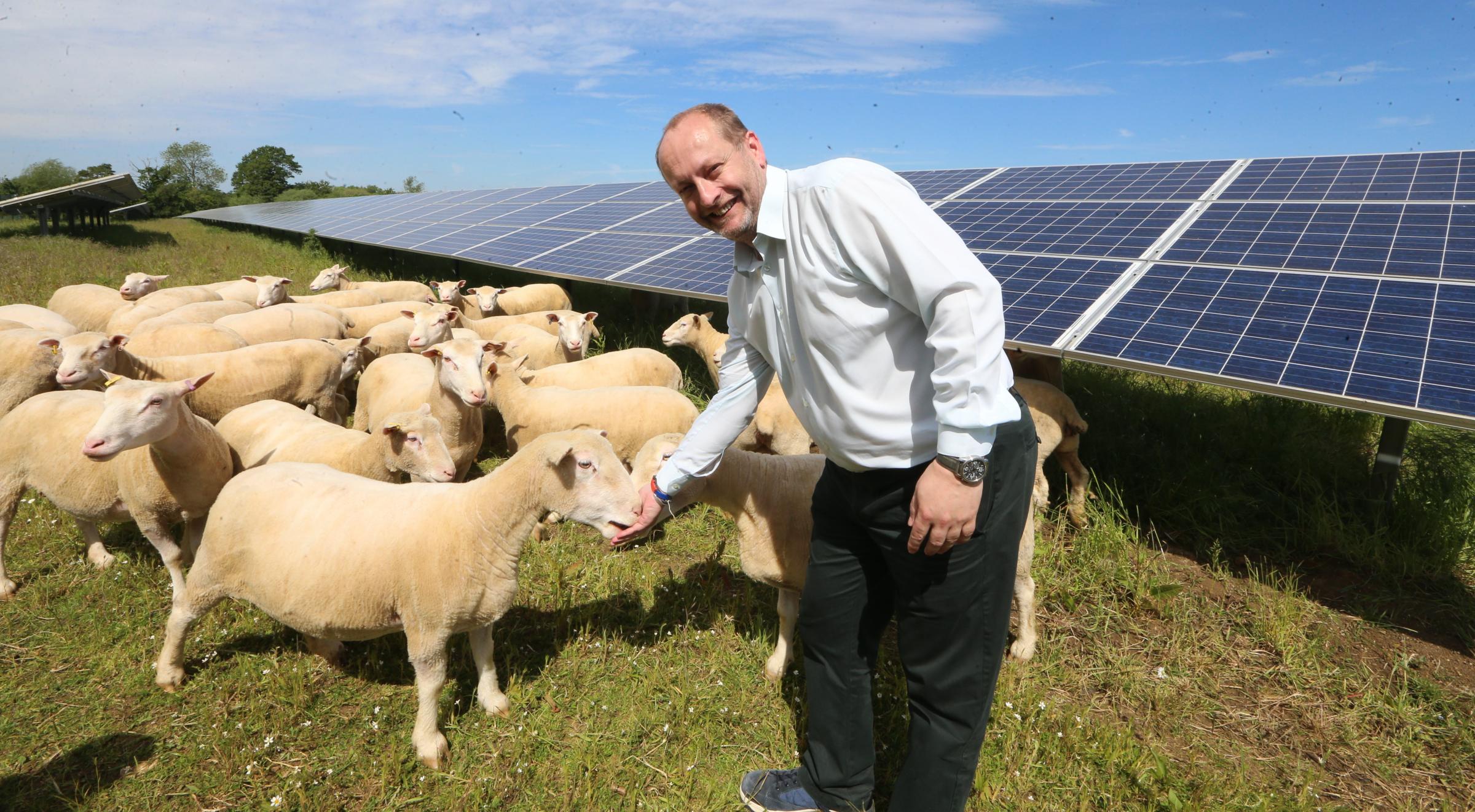The weakening myth that most Brits object to big solar farms grew further enfeebled today, as research from the PV industry’s main lobby group quantified widespread, deepening support for solar in Britain’s fields.
Examining attitudes among a sample of nearly 500 residents living close to utility-scale farms, opinion researchers at Copper Consultancy found that 56% supported such developments in their locality, with 25% opposed.
Tracking views over time, researchers found that, with experience, more than one in six neighbours grew in their support for farm-scale solar. Multi-functional use of fields – such as combining generation of clean power with sheep grazing or wildflower meadows – and minimising agriculture’s environmental impacts, top big PV’s benefits in country-dwellers’ estimations, the researchers found.
Released as ‘2022: a Bright Future for UK Solar’, the market researchers’ work is published by Solar Energy UK.
Among past objectors to big solar have been Conservative minister and Faversham MP Helen Whatley. She was among 867 objectors logged before the Planning Inspectorate greenlighted in 2020 Britain’s biggest farm to date, the 350MWp, 1,000-acre Cleve Hill development in her constituency. Reportedly, only 15 signatories wrote in to support that project during its application stage.
Comedian Griff Rhys Jones also failed in 2013 to see the funny side of the 16MWp Tattingstone solar park near his Suffolk home. But with no immediate neighbours to the site near Ipswich, and copses and hedgerows planted by developers Hive Energy, also a partner in Cleve Hill, may have meant the preservation advocate and ‘Alas Smith and Jones’ star may have in practice seen few panels.
Sam Cranston, director of the market researchers behind today’s study, points out that the research hints at potential to push already high public esteem for solar farms still higher.
He cites the study’s finding that 56% of respondents remain unaware that solar farms can deliver on improving natural capital and enhancing a site’s biodiversity.
Fear of neighbours’ supposed objections, never realised in fact, may be perversely colouring country-dwellers’ attitudes and perhaps planners’ too, the research implies. Another finding is that that 39% of respondents identify fears of public opposition to solar farms as the main barrier to development in their area.
The benefits of solar farms on biodiversity and local wildlife are significantly underestimated, Cranston said.
The research is released as industry analysts calculate a record-breaking 37GW of applications for subsidy-free solar farms awaits decisions from Britain’s planners, either centrally or from local authorities.
Chris Hewett leads Solar Energy UK, who paid for today’s research. He remarked “Solar farms are now part of the British landscape. This ground-breaking survey shows strong public support, from all parts of the country. It is especially good to see that people who live close to parks become even more favourable over time.”
“We understand that one top public concern is how a solar farm will impact local nature, which is why we are working with ecologists to develop best practice for land management and regular monitoring.
“Evidence so far shows a solar farm usually increases the biodiversity of wildflowers, pollinators and bird species.”
Interest declared: the author invests in several UK community energy co-operatives, the majority of them solar ventures.
Download the report here.




